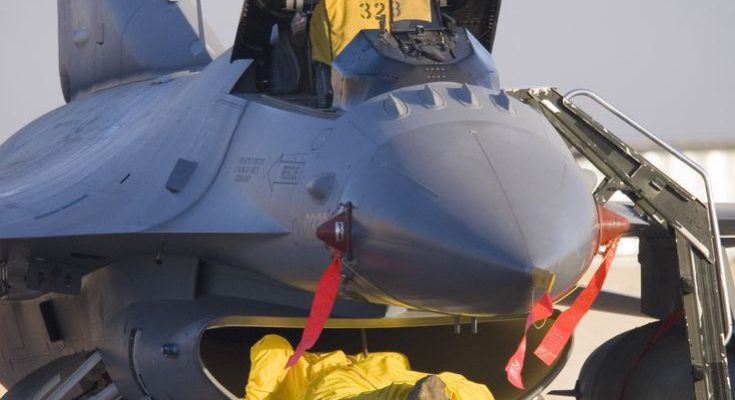The F-16 Fighting Falcon is one of the most widely recognized and versatile fighter jets in the world. It has seen action in numerous conflicts and has earned a reputation for its agility, speed, and multi-role capabilities. Here’s a breakdown of the F-16 in action, highlighting its effectiveness in combat:
1. Air-to-Air Combat
- Dogfighting: The F-16 is highly maneuverable, making it an excellent platform for dogfighting. Its agility, combined with advanced avionics and radar, allows it to track and engage enemy aircraft efficiently.
- Beyond Visual Range (BVR) Engagements: With modern missile systems like the AIM-120 AMRAAM, the F-16 can engage enemy aircraft beyond visual range. It uses its radar to lock onto targets and fire missiles from distances where the enemy can’t yet detect the F-16.
2. Air-to-Ground Missions
- Precision Strikes: The F-16 is equipped with advanced targeting systems and is capable of carrying a variety of bombs, including laser-guided and GPS-guided munitions. This makes it highly effective in precision strikes against enemy ground targets, such as military infrastructure, command centers, and bunkers.
- Close Air Support (CAS): The F-16 is frequently used in close air support missions, where it provides air cover for ground forces. Its ability to deliver precision strikes in complex environments is vital in supporting infantry and armor on the battlefield.
3. Combat Air Patrols (CAP)
- The F-16 is often used for air defense, performing Combat Air Patrols (CAP) over key areas. In this role, it ensures that enemy aircraft do not enter restricted airspace, providing vital protection to ground forces and high-value assets.
4. Interdiction Missions
- The F-16 can conduct interdiction missions, targeting enemy supply lines, convoys, and reinforcements. By disrupting enemy logistics, it can effectively weaken the enemy’s ability to sustain operations, thus shaping the battlefield in favor of friendly forces.
5. Multirole Operations
- The F-16 is one of the most versatile fighter jets in the world, capable of performing a wide range of missions. This multirole capability allows it to seamlessly transition from air superiority to strike missions, ensuring it can adapt to the evolving needs of combat.
6. Global Operations
- The F-16 has seen action in numerous conflicts around the world. It has been deployed in Desert Storm, Operation Enduring Freedom, Operation Iraqi Freedom, and more. Its adaptability and low cost compared to newer platforms make it a staple in the air forces of many nations.
- NATO Operations: The F-16 has been used by NATO and allied forces in various peacekeeping and deterrent operations. Its interoperability with other NATO aircraft is crucial for joint operations.
7. Speed and Agility
- The F-16 is known for its high speed and agility, making it an effective platform for evasive maneuvers and quick response in dynamic combat environments. Its ability to operate at both high altitudes and low levels gives it tactical flexibility.
8. Training and Simulation
- The F-16 is also widely used for training purposes. Its role in air combat training for both the U.S. and allied air forces has helped refine tactics and develop new strategies for modern warfare.
In summary, the F-16 Fighting Falcon has proven itself as an indispensable tool for modern air forces. Its combination of speed, agility, advanced technology, and multirole capabilities allows it to operate effectively in a wide range of combat scenarios. Whether conducting air-to-air combat, precision strikes, or close air support, the F-16 remains a vital asset in modern warfare.
Post Views: 45



